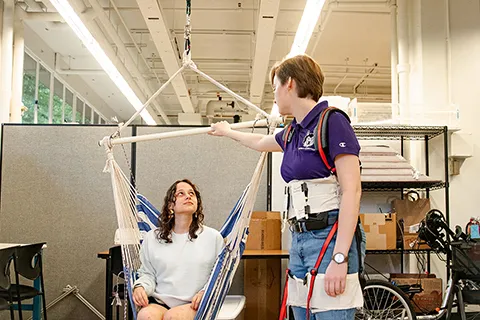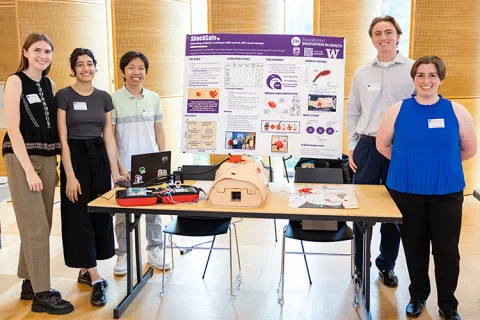Clallam County Sheriff’s Office, Emergency Management
Power for a Resilient Fairchild Airport
Fairchild Airport (CLM) in Port Angeles is the federal staging area for disaster relief on the Olympic Peninsula after a catastrophic regional event. The emergency management division of the Clallam County Sheriff’s office sees great need for a more resilient Fairchild Airport (CLM). Approximately $1 billion of FAA funding is available annually through the Airport Terminal Program (ATP) to address aging infrastructure in terminals and control towers, and to reduce greenhouse gas emissions, promote energy efficiency, and increase climate resilience. This student team worked to create a renewable solar/storage microgrid that would allow the terminal and control tower to remain operational during extended power outages. As a second phase of the project, the student team worked to support the goals of the FAA ATP funding guidelines, but be flexible enough to accommodate an emergency operations center using engineering design and analysis. This student team worked to build off of prior analysis staff at the Washington Clean Energy Testbeds have performed for the Snohomish County PUD Arlington microgrid. Microgrids are a growing area for engineering design. An advisory group helped guide the technical and community elements of all three microgrid projects on the Olympic Peninsula. Desired outcomes the student team worked towards included a final engineering report that: (1) Describes the context for the study, including a statement of the resiliency goals and metrics that align the FAA funding opportunity and community input, and the data sources available for estimating the electrical loads, solar and wind energy potential of the site, and other environmental factors (site hazards, fuel availability, etc.) (2) Aligns FAA requirements with community priorities and engineering principles to determine microgrid infrastructure needs and costs to support the highest priority loads under several discrete operational scenarios, for example, outages occurring in summer vs winter, and for islanded operation of days, weeks, or months (following a catastrophic disaster). (3) Detailed technoeconomic analysis of the base case design, including engineering drawing, component lists and pricing estimates, with performance of the design evaluated using real-time digital simulation. Highlight design features that allow flexible expansion of the microgrid capabilities for a future EOC at an adjacent site.
Faculty Adviser
Payman Arabshahi,
Associate Professor, UW ECE,
Electrical & Computer Engineering
Students
Chenyang Tian
Evan Bowman
Sophia Votava
Wesley Hinthorne King
Related News

Fri, 09/20/2024 | UW Civil & Environmental Engineering
Smarter irrigation for a greener UW
A new project combines satellite data with ground sensors to conserve water and create a more sustainable campus environment.

Mon, 09/09/2024 | UW Mechanical Engineering
Testing an in-home mobility system
Through innovative capstone projects, engineering students worked with community members on an adaptable mobility system.

Mon, 08/19/2024 | UW Mechanical Engineering
Students strive to ensure accurate AED shock dosage
ShockSafe, developed by students with the help of mentors from Philips and Engineering Innovation in Health (EIH), can distinguish between children and adults during cardiac arrest emergencies.

Wed, 08/07/2024 | Snohomish County News
Snohomish County, University of Washington partnership boosts efficiency in enterprise scanning center
UW Industrial and Systems Engineering Capstone Project set to save Snohomish County over $40,000 annually.